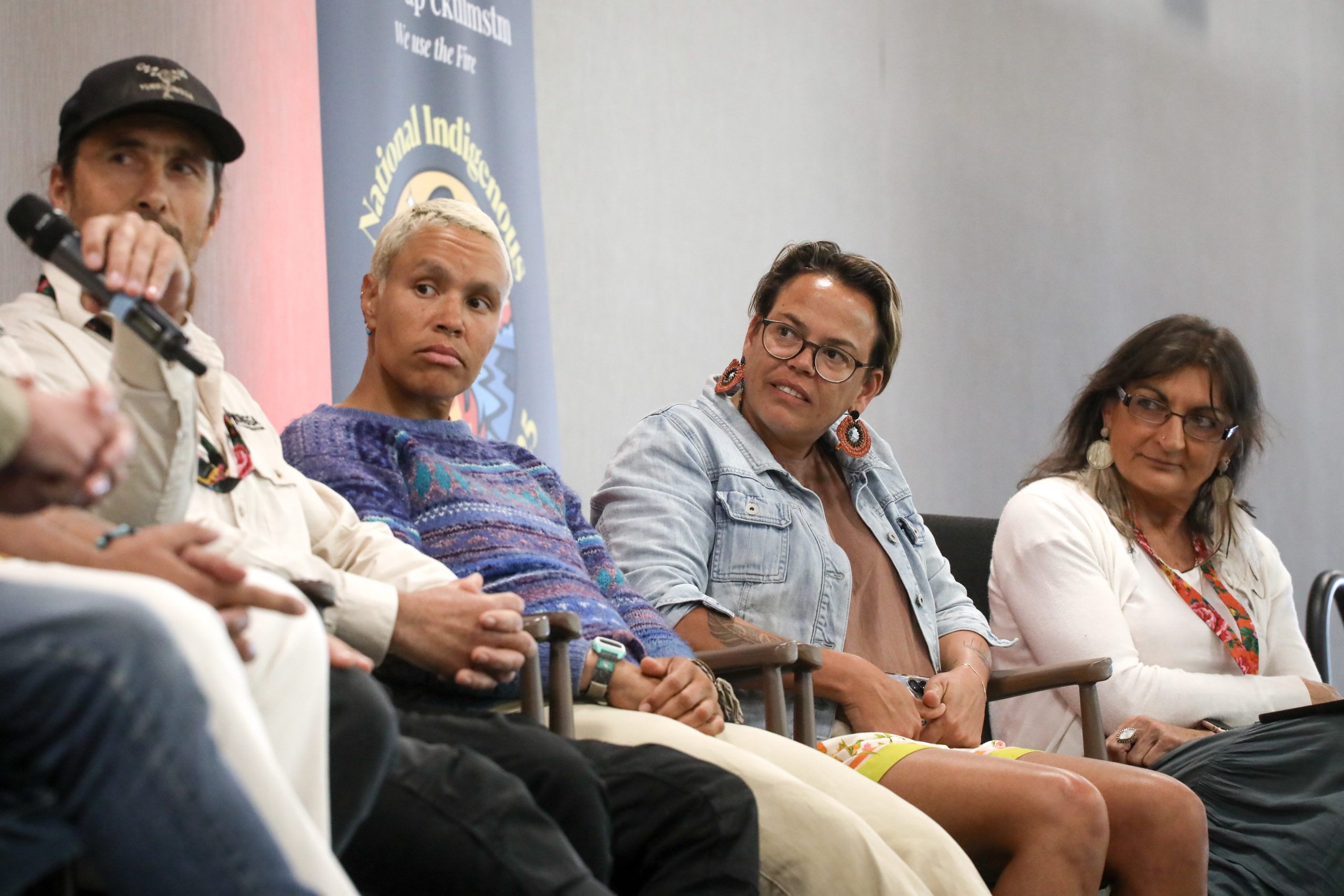‘They were just children’: c̓išaaʔatḥ confirms potential graves at former Alberni residential ‘school’
Researchers identified 17 suspected burial sites and say at least 67 more children never made it home from the ‘brutal’ institution
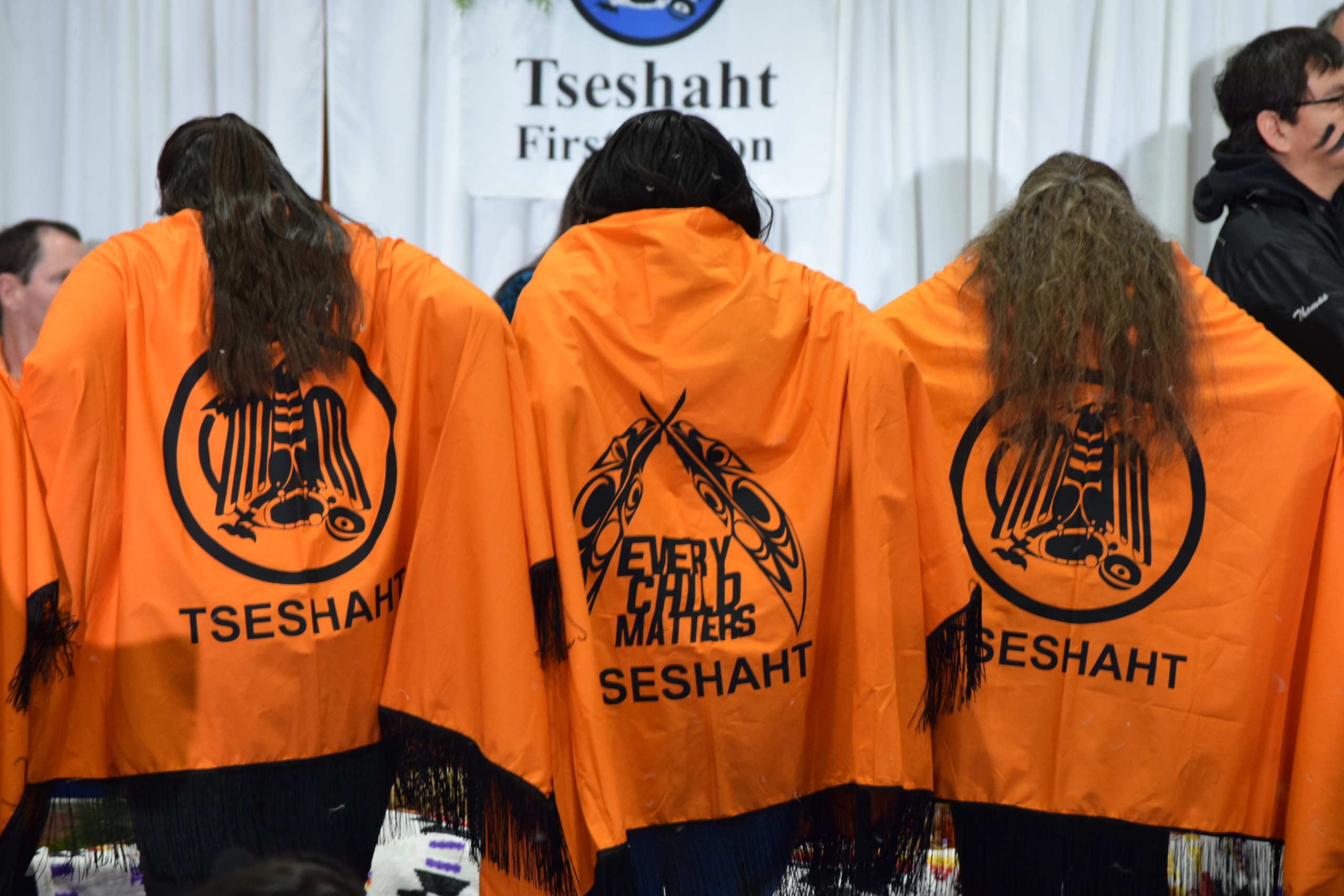

CONTENT WARNING: This story contains graphic details about residential “schools” that many will find distressing or triggering. Please look after your spirit and read with care.
For his entire life, Wahmeesh (Ken Watts) has felt the ghosts of the former Alberni Indian Residential School (AIRS) in his community.
The spirits of the children who never returned from the institution have always lingered, as have the many unanswered questions from their families.
On Tuesday, c̓išaaʔatḥ (Tseshaht) announced the results of the first phase of its investigation into the “school” — affirming what many survivors have long known.
After scanning just 12 hectares of the 100-hectare research site, c̓išaaʔatḥ’s team found 17 potential unmarked graves. Through research, the community also confirmed that at least 67 children died while they were students at AIRS.
“We need to remember that all of these ‘students’ were just children. They were just children,” said Wahmeesh, the elected chief of c̓išaaʔatḥ, on Tuesday.
“That’s the reality that our communities have to live with.”
AIRS was managed in Nuu-chah-nulth territories by both the Presbyterian Church and the United Church as well as the Government of “Canada” from the late 1800s until 1973.
It’s now known as one of the most notorious residential “schools” in the country because of the inhuman level of abuse inflicted upon the children who were forced to attend, which included sexual and physical torture as well as medical and nutritional experiments.
The day of the announcement, dozens of c̓išaaʔatḥ members entered their community gymnasium through a cedar-adorned doorway — many wearing orange shirts or regalia.
After a ceremonial opening, people laid down teddy bears — one for every known lost child and potential grave — and sang several songs. As pounding drum beats echoed through the building, dancers wearing orange blankets moved in unison.
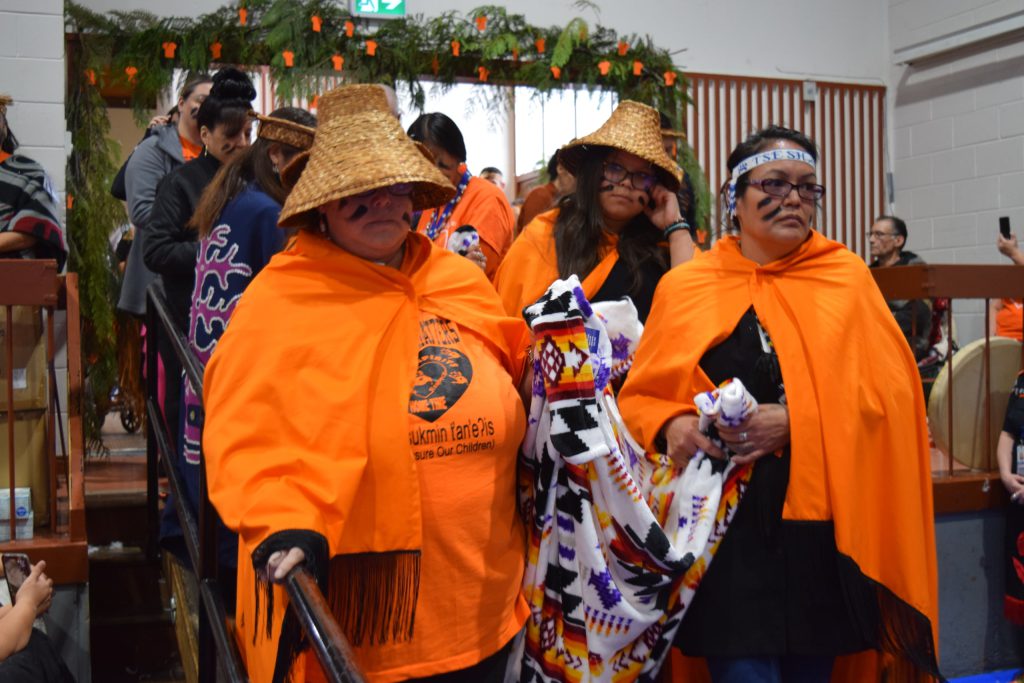
Afterwards, the survivors in attendance were acknowledged. According to c̓išaaʔatḥ, children were brought to AIRS from more than 70 First Nations across “B.C.”
“I want you to look at the survivors who are here, because the reason we got up and were able to sing today and we were able to speak our language was because they survived,” Wahmeesh said.
“They’re the ones that are our warriors. They made it through all those troubling times. … So I wanted to acknowledge all of you as survivors and say ʔuušy̓akšiƛeʔic — thank you for surviving. We owe you.”
Watching the announcement from where he now lives in Snuneymuxw homelands, survivor Randy Fred, an Elder from c̓išaaʔatḥ, said he felt “extremely sad” for the families of children who were taken and never returned home.
“They were never given any report or any information about the disappearance of their family members,” said Fred, who spent nine years at the “school.”
Fred was one of a group of survivors who came forward to testify in a B.C. Supreme Court case against former supervisor Arthur Plint, who was sentenced in 1995 to 11 years for the sexual and physical assaults he inflicted against children while he was employed at AIRS.
During his sentencing, Ha-Shilth-Sa reported that Justice Douglas Hogarth described the residential “school” system as “institutionalized pedophilia,” and the children forced to attend were “not only in a school situation but also prisoners,” adding that when it came to Plint, he had “never heard of such a terrible situation in all my years in the court.”
“With these new discoveries, this whole new process of underground radar and whatnot, it’s adding more to the story of the horrors of those Indian residential schools. You know, it’s really hard to get across how brutal those people were,” recalled Fred, who said one supervisor was a Korean War veteran who “would start beating on a boy and the older boys would have to pull them off to prevent him from killing that boy.”
Fred suspected many of the staff were “the bottom of the workforce barrel” who couldn’t get work elsewhere.
“They were sick. They were very, very mentally ill. And those were our parental figures.”
The so-called “school” was shut down in 1973 only after Nuu-chah-nulth leaders came together to advocate to the federal government to have its doors closed, Wahmeesh explained.
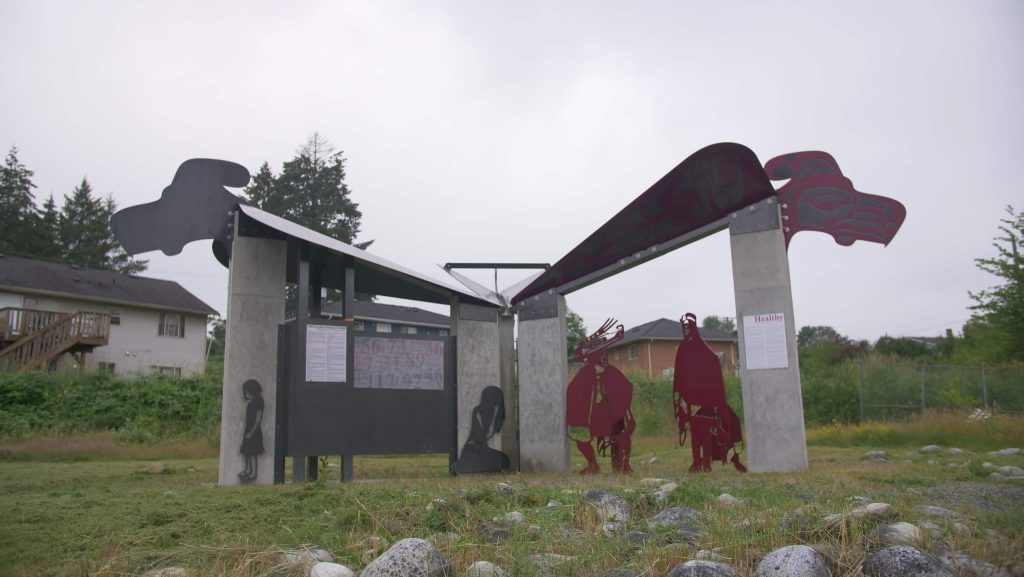
Not a job, but a sacred responsibility
“As a nation we take this as a sacred responsibility to do this work. It’s not a job. I don’t even like calling it a project or an initiative. It’s a sacred responsibility,” said Wahmeesh. “We have to get the answers that survivors need and deserve, as well as [for] those who didn’t make it home.”
The nation’s research was undertaken by c̓išaaʔatḥ through an ongoing project called ʔuuʔatumin yaqckʷiimitqin — a Nuu-chah-nulth word meaning “doing it for our ancestors.”
The research team — which started work in mid-2022 — sought to answer central questions of how many children died at AIRS, their causes of death and identities, and what happened to children who went missing.
Taking what lead researcher Sheri Meding described as “holistic and inclusive” methodology, the team centred survivors’ lived experience and firsthand accounts as well as historical research, which included accessing records through the United Church.
Meding, a citizen of the Métis Nation of Ontario, said when survivors were asked about where to find any potential unmarked burials, they were able to pinpoint exact locations.
They also recalled nightmarish experiences including forced abortions, finding human remains around the “school” while imprisoned there, witnessing staff members taking a dead student out of the building and seeing staff carrying coffins outside in the middle of the night.
“There were young girls who were impregnated by staff of AIRS and those children, those babies, were put in an incinerator,” said Wahmeesh, who added that researchers will look into how to verify these accounts in the weeks and months ahead.
There were also accounts of “accidents” which survivors believe were actually the result of harm inflicted by staff or suicides, Meding said. There were two accidental deaths recorded at the school in 1969 and 1972, according to Ha-Shilth-Sa.
“Survivors made it really clear that they did not want us to share a sanitized version of the residential school history that is incomplete and has omissions,” Meding said.
“Survivors have been continually sharing their truth and not having it received … in a way that honours the truth that they’re speaking.”
Though a memorial through the National Centre for Truth and Reconciliation lists the names of 29 children who died at AIRS, the c̓išaaʔatḥ team has confirmed that number to be significantly higher — and says it is actually, at minimum, 67.
Additionally, c̓išaaʔatḥ has also been working with a company called GeoScan to conduct the ground survey and non-invasive scans of the site around the “school,” which revealed the 17 potential gravesites.
Though a gravesite cannot be confirmed without actually going into the ground, “which is not appropriate for many cultures,” said Brian Whiting, a geophysics division manager with GeoScan, those 17 sites met their four basic criteria of the geophysical features or signatures that represent graves.
The research and scans will continue, Wahmeesh said, and the community has not yet made plans about whether to excavate remains.

Poor conditions contributed to deaths: researcher
“Overwhelmingly, the cause of death was due to medical conditions,” Meding said, adding that facilities at the “school” were very clearly inadequate and unhealthy.
“And not just in the very early years,” she said. “Yes there were many deaths early on, in the pre-1920s, but the poor conditions at the school continued on into the ’40s and ’50s.”
In 1948, the children at AIRS were subjects in a series of nutritional experiments led by federal nutrition expert Dr. Lionel Pett, who wanted to “examine the effects of malnutrition,” according to a 2013 report investigated by food historian Ian Mosby.
The five-year series of experiments were supported by the government of “Canada” and involved 1,000 children at six residential “schools” across the country, including AIRS. The institutions were chosen because their inadequate facilities resulted in the children being malnourished.
“At Alberni, early investigations found not only an inexperienced staff and out-of-date, run-down kitchen facilities but that the diets of the children were lacking in vitamins A, B, and C and iodine,” the report states, in part.
Mosby’s research includes an account from AIRS survivor Ray Silver about how he and other starving children would sneak out of the school and scavenge rotten apples from the dump to eat.
The report also details how the children were essentially used as lab rats and subjected to invasive tests such as blood extractions and dental work, as well as withholding dental care and milk rations to study the effects.
In an interview, Mosby said the nutrition experiments were only possible because of the poor quality and inadequate quantity of food being supplied to the children.
“It is well known that the poor sanitary conditions and overcrowding at AIRS and other residential schools made children susceptible to a whole range of illnesses,” he said in a written response.
“Children became ill and died as a direct result of Canada’s decision to underfund and over-enroll residential schools over nearly their entire history.”
Among the list of c̓išaaʔatḥ’s specific recommendations is the call for an independent body to investigate medical records and the connections between AIRS and Indian hospitals where many sick children were discharged. Researcher Meding said this represents a gap in information because of the lack of access to medical records.
Mosby said he supports that recommendation, as his own research was also limited by access to records.
“A formal inquiry would be able to access records that an individual researcher or community simply wouldn’t be able to get access to,” he said.
Further, c̓išaaʔatḥ is seeking an independent investigation of the direct role the RCMP played in removing children from their homes.
They also are seeking funding from both the government of “Canada” and the United and Presbyterian churches for research, mental health supports and healing initiatives in the community.
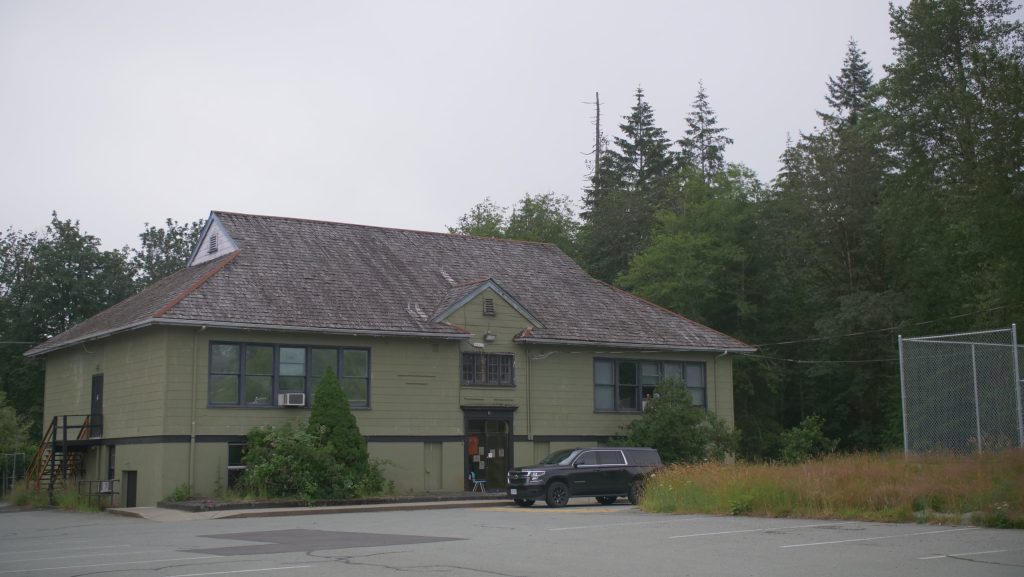
The community also plans to hold a ceremony to tear down the remaining structure from AIRS, Caldwell Hall, which is still standing, and hopes to see “Canada” fund that effort. The community also wants to build a memorial that includes the name of every person who was forced to attend AIRS, including survivors.
“If you can afford to build those buildings, you can afford to tear them down,” Wahmeesh said.
“If they can build war memorials for people who served in war, they can build memorials for all of (those) who were warriors and survived the residential schools.”
Nuu-chah-nulth Tribal Council president Judith Sayers condemned the churches and “Canada” for their active role in the deaths.
“We condemn those horrific practices of genocide of the church and Canadian government that meant those children did not get to go home,” she said.
“That families did not know what happened to their beloved children. Where young innocent children were subject to vile, evil people who had no respect for First Nations lives.”
Wahmeesh said there have been so many similar announcements across the country that he feels people have become numb — but he doesn’t want for these new findings to just get glanced over and become just “another number.”
He also sent his love to all Indigenous people, and emphasized what a heavy time it’s been. There has been a national reckoning unfolding around unmarked burials at residential “schools” since May of 2021, when Tk’emlúps te Secwépemc announced it had found evidence indicating that the remains of 215 children were buried at the grounds of the former Kamloops Indian Residential School.
Since then, many more efforts to search other former institutions have been underway, with technology such as ground-penetrating radar indicating hundreds more at sites across the country.
“It feels like the weight of the world is on our shoulders knowing that some of our children never made it home … but I also share with each of you that you are loved,” Wahmeesh said.
“Even though you were told not to say, ‘I love you’, I’m here to tell you all that I love you. And we’re here to tell you that we love you too.”
Support for survivors and their families is available. Call the Indian Residential School Survivors Society at 1-800-721-0066, 1-866-925-4419 for the 24-7 crisis line. The KUU-US Crisis Line Society also offers 24-7 support at 250-723-4050 for adults, 250-723-2040 for youth, or toll free at 1-800-588-8717.
Author
Latest Stories
-
‘Bring her home’: How Buffalo Woman was identified as Ashlee Shingoose
The Anishininew mother as been missing since 2022 — now, her family is one step closer to bringing her home as the Province of Manitoba vows to search for her
-
‘We have a way to save communities’: Cultural fire keepers share knowledge across colonial borders
First Nations experts attend first National Indigenous Fire Gathering in syilx homelands, joining counterparts from ‘Canada,’ ‘Australia’ and ‘U.S.’
-
‘This is the vision’: Inside Nlaka’pamux Nation’s quest to build ‘B.C.’s’ first major solar project
As the province fast-tracks development, the Southern Interior tribal council has lessons to share on how to build for the future



